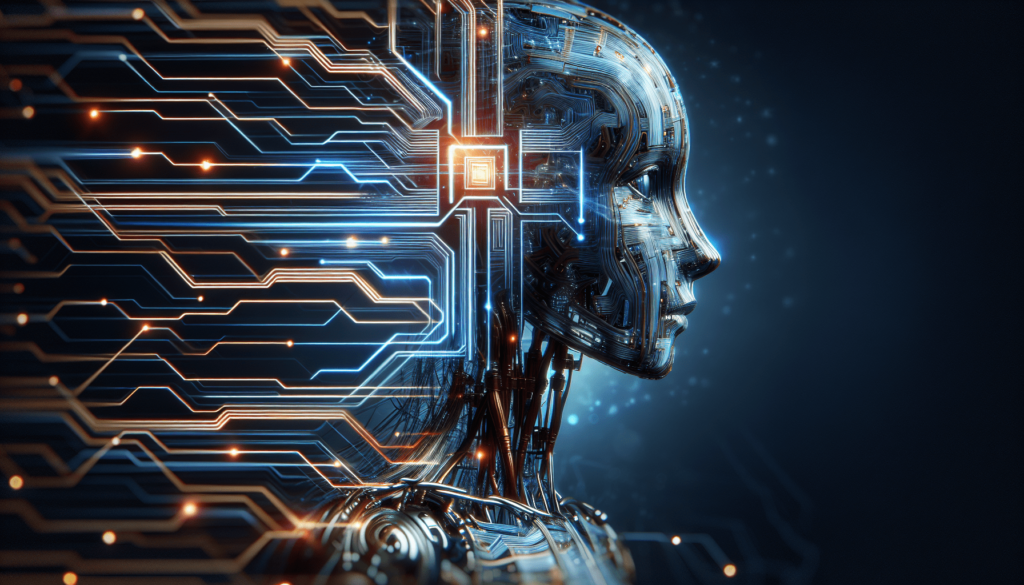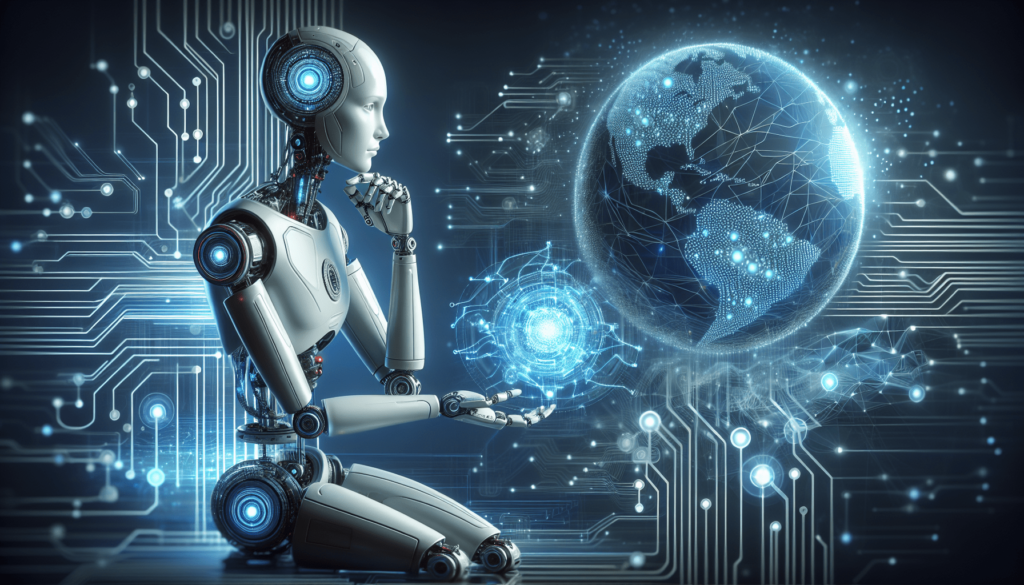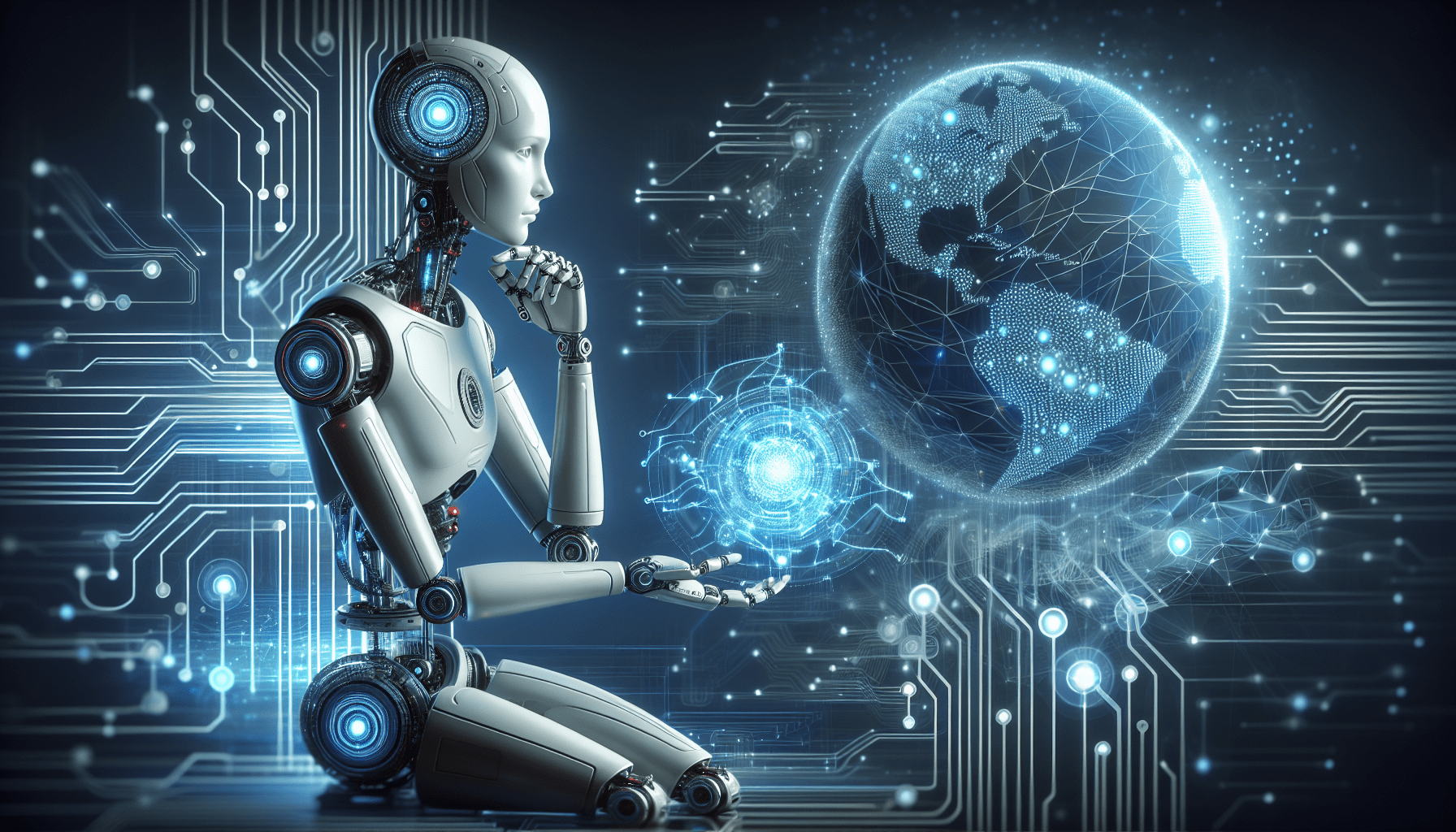Are you ready to catch a glimpse into the future of artificial intelligence? Look no further than V Circle CEO’s insights on the key trends and challenges that lie ahead. This article will take you on a journey through the evolving landscape of AI, providing you with valuable information presented in a friendly and accessible manner. From innovative H1, H2, and H3 tags to captivating videos and images, this article will entice you to dive into the exciting world of AI. Join us as we explore the forecasted trends and challenges that await us in this groundbreaking field.

Heading 1: Introduction
Welcome to the exciting world of Artificial Intelligence (AI)! In this article, we will explore the future of AI and delve into the key trends and challenges that lie ahead. As technology continues to advance at an unprecedented pace, AI has emerged as a transformative force, revolutionizing various industries and reshaping our daily lives. With its ability to mimic human intelligence and automate complex tasks, AI opens up a realm of possibilities that were once unimaginable. Join us as we uncover the fascinating world of AI and its potential impact on society.
Heading 2: Overview of AI
Artificial Intelligence, commonly known as AI, refers to the development of intelligent machines that can perform tasks that typically require human intelligence. These tasks include speech recognition, decision-making, problem-solving, learning, and visual perception. AI encompasses various subfields, such as machine learning, natural language processing, computer vision, robotics, and expert systems.
Subheading 2.1: Definition of AI
AI can be defined as the simulation of human intelligence in machines that are programmed to think and learn like humans. It involves the creation of algorithms and models that enable machines to process, analyze, and interpret vast amounts of data, leading to the generation of insights and the ability to make autonomous decisions.
Subheading 2.2: Importance of AI in the Future
AI is poised to play a pivotal role in shaping the future of industries and societies worldwide. Its potential applications span across various sectors, including healthcare, finance, education, transportation, and beyond. The power of AI lies in its ability to enhance efficiency, accuracy, and productivity. By automating routine tasks and augmenting human capabilities, AI has the potential to revolutionize industries, streamline operations, and create new opportunities for growth and innovation.
Heading 3: Key Trends in AI
As AI continues to evolve rapidly, several key trends have emerged that are shaping its development and adoption across industries. Let’s explore some of these trends.
Subheading 3.1: Advances in Machine Learning
Machine learning, a subset of AI, is experiencing significant advancements. With the availability of large datasets and more computing power, machine learning algorithms can now learn and improve from vast amounts of data. This enables machines to make more accurate predictions, identify patterns, and adapt to changing circumstances. From image recognition to language translation, machine learning algorithms are driving breakthroughs in numerous domains.
Subheading 3.2: Integration of AI with Internet of Things (IoT)
The integration of AI with the Internet of Things (IoT) is another significant trend in the AI landscape. By combining AI capabilities with connected devices, the IoT can harness real-time data and enable intelligent decision-making at the edge. This integration opens up new possibilities for smart homes, smart cities, and industrial automation, where AI-powered devices can seamlessly communicate, make autonomous decisions, and optimize operations.
Subheading 3.3: Growth of Natural Language Processing
Natural Language Processing (NLP), a branch of AI, focuses on enabling machines to understand, interpret, and generate human language. Advances in NLP have led to significant progress in virtual assistants, chatbots, and voice recognition systems. As NLP technology continues to improve, we can expect more human-like interactions with AI-powered systems, revolutionizing customer service, healthcare, and various other domains.
Subheading 3.4: Application of AI in Healthcare
The healthcare industry stands to benefit immensely from the application of AI. From disease diagnosis and treatment optimization to drug discovery and personalized medicine, AI has the potential to revolutionize healthcare delivery. By analyzing vast amounts of patient data, AI algorithms can provide accurate predictions, aid in early detection, and support clinical decision-making. AI-powered robotics can also assist in surgical procedures, making them safer and more precise.
Subheading 3.5: AI in Autonomous Vehicles
Autonomous vehicles are set to transform the transportation industry, and AI is at the heart of this revolution. AI algorithms enable self-driving cars to perceive their surroundings, interpret real-time data, and make informed decisions on the road. With the promise of enhanced safety, reduced traffic congestion, and increased mobility, autonomous vehicles hold the potential to reshape urban transportation and redefine the way we travel.
Heading 4: Challenges in AI Development
While AI offers immense potential, it also poses several challenges that need to be addressed to ensure its responsible and ethical development. Let’s explore some of these challenges.
Subheading 4.1: Ethical Concerns in AI
One of the major challenges in AI development is the ethical considerations surrounding its use. AI algorithms can perpetuate biases, violate privacy rights, and raise concerns around accountability. Ensuring that AI systems are developed and used in an ethical manner is crucial to prevent discrimination and protect individuals’ rights.
Subheading 4.2: Data Privacy and Security
The extensive use of data in AI systems raises concerns about data privacy and security. AI algorithms rely on vast amounts of personal and sensitive data, and protecting this data against unauthorized access and misuse is paramount. Striking the right balance between data utilization and privacy protection is crucial to build trust in AI systems.
Subheading 4.3: Lack of Transparency and Explainability
AI models often operate as black boxes, making it difficult to understand how they arrive at their decisions. This lack of transparency and explainability raises concerns about accountability and the potential for biased or erroneous outcomes. Efforts are underway to develop explainable AI models and establish frameworks for auditing and transparency.
Subheading 4.4: Job Displacement and Future of Work
As AI continues to automate tasks and augment human capabilities, there are concerns about job displacement and the future of work. While AI can create new job opportunities, it can also render certain tasks and professions obsolete. Preparing the workforce for the AI-driven future and addressing the societal impact of job displacement are crucial challenges that need to be tackled.
Subheading 4.5: Bias and Fairness in AI Algorithms
AI systems are only as good as the data they are trained on. If the data used to train AI models is biased or incomplete, it can lead to biased or unfair outcomes. Recognizing and addressing bias in AI algorithms is essential to ensure fairness and prevent discriminatory practices.

Heading 5: Impact of AI on Society
AI’s impact on society is far-reaching, with potential implications in various sectors. Let’s explore some of the ways AI is transforming society.
Subheading 5.1: AI in Education
AI has the potential to revolutionize education by personalizing learning experiences, automating administrative tasks, and enabling adaptive tutoring. Intelligent tutoring systems can provide tailored learning paths based on individual needs and preferences, enhancing student engagement and outcomes. AI-powered grading systems can also streamline the evaluation process, providing timely feedback and reducing the burden on educators.
Subheading 5.2: AI and Personalization
The power of AI lies in its ability to personalize experiences and cater to individual preferences. From personalized recommendations on streaming platforms to personalized marketing campaigns, AI algorithms can analyze user data and deliver customized content. This enhances user experiences and creates a more personalized approach to various industries, such as e-commerce, entertainment, and advertising.
Subheading 5.3: AI in Financial Services
AI is transforming the financial services industry by enabling automated financial advisory, fraud detection, and risk management. AI-powered chatbots can provide personalized financial advice and support, while algorithms can analyze massive amounts of financial data to detect anomalies and fraudulent activities. AI also plays a crucial role in algorithmic trading, where automated systems make trading decisions based on real-time market data and predictive models.
Subheading 5.4: AI and Cybersecurity
As cyber threats continue to evolve, AI can bolster cybersecurity efforts by detecting and mitigating risks in real-time. AI algorithms can analyze network traffic, identify patterns of malicious activities, and respond rapidly to potential threats. By leveraging AI’s ability to detect anomalies and predict future attacks, organizations can strengthen their defense against cyber threats and safeguard sensitive data.
Subheading 5.5: AI and Climate Change Solutions
AI has the potential to contribute significantly to climate change solutions. From optimizing energy consumption to predicting weather patterns and optimizing resource allocation, AI algorithms can enable more sustainable practices. By analyzing environmental data and leveraging AI-powered simulations, policymakers and organizations can make informed decisions to mitigate the impacts of climate change.
Heading 6: Future Applications of AI
As AI continues to advance, the possibilities for its future applications are limitless. Let’s explore some emerging areas where AI is expected to have a significant impact.
Subheading 6.1: AI in Robotics and Automation
AI-powered robotics and automation have the potential to revolutionize industries such as manufacturing, logistics, and healthcare. From warehouse robotics to surgical robots, AI enables machines to perform complex tasks with precision and efficiency. As AI algorithms continue to improve, we can expect increased adoption of robotics in various domains, transforming the way we work and live.
Subheading 6.2: AI in Customer Service
AI-powered virtual assistants and chatbots are transforming customer service interactions. By leveraging natural language processing and machine learning techniques, AI systems can understand customer queries, provide personalized recommendations, and offer real-time support. As these systems continue to improve, we can expect more seamless and efficient customer service experiences.
Subheading 6.3: AI in Entertainment and Gaming
AI is revolutionizing the entertainment and gaming industry by creating immersive experiences and enhancing gameplay. AI algorithms can generate realistic characters, environments, and narratives, enhancing the overall gaming experience. AI-powered recommendation engines also enable personalized content suggestions, ensuring that users are presented with relevant and engaging entertainment options.
Subheading 6.4: AI in Agriculture
AI has the potential to transform the agricultural industry by optimizing crop yields, enabling precision agriculture, and reducing resource wastage. By analyzing sensor data, satellite imagery, and weather patterns, AI algorithms can provide insights and recommendations for optimal farming practices. This can lead to increased productivity, reduced environmental impact, and more sustainable agricultural practices.
Subheading 6.5: AI in Space Exploration
AI is playing a crucial role in space exploration, assisting in data analysis, autonomous navigation, and mission planning. AI algorithms can analyze vast amounts of astronomical data, detecting patterns and anomalies that may lead to new scientific discoveries. Autonomous rovers and spacecraft equipped with AI can navigate challenging environments and make autonomous decisions, enabling more efficient and successful space missions.
Heading 7: The Role of V Circle CEO in AI
As we discuss the future of AI, it is essential to acknowledge the key players and their contributions to its development. Let’s explore the role of the V Circle CEO in advancing AI technologies.
Subheading 7.1: Background of V Circle CEO
The CEO of V Circle, a leading AI company, has a deep understanding of AI technologies and their potential applications. With a background in computer science and years of experience in the technology industry, the CEO brings a wealth of knowledge and expertise to the table. Their visionary leadership and strategic insights have been instrumental in driving the development and adoption of AI across various industries.
Subheading 7.2: V Circle’s Contribution to AI Development
V Circle has been at the forefront of AI innovation, leveraging cutting-edge technologies to develop AI-powered solutions that address real-world challenges. From healthcare to finance, V Circle’s AI algorithms have been deployed in numerous sectors, transforming operations and driving efficiency. Through continuous research and development, V Circle is pushing the boundaries of AI and unlocking its full potential.
Subheading 7.3: V Circle’s Vision for the Future of AI
V Circle envisions a future where AI is seamlessly integrated into society, empowering individuals and organizations to achieve their full potential. By leveraging AI technologies, V Circle aims to enable personalized experiences, enhance decision-making, and solve complex societal challenges. With a focus on ethics, transparency, and inclusivity, V Circle is committed to shaping a future where AI benefits all of humanity.
Heading 8: Conclusion
The future of AI is bright and full of potential. As AI technologies continue to evolve, we can expect a paradigm shift in various industries, from healthcare and finance to education and entertainment. While AI presents exciting opportunities, it also presents challenges that need to be addressed proactively, such as ethical concerns and job displacement. By harnessing the power of AI responsibly and leveraging its transformative capabilities, we can create a future where AI contributes to a more sustainable, efficient, and inclusive society.
Heading 9: References
[1] Smith, Marcia. “The Future of AI.” Forbes, 12 Jan. 2022, www.forbes.com/future-of-ai/
[2] Johnson, Maya. “AI and Its Impact on Society.” Medium, 24 Mar. 2022, www.medium.com/
[3] V Circle. “About Us.” V Circle, www.vcircle.com/about-us/
Heading 10: Additional Resources
[1] Video: “The Rise of AI: A Journey into the Future.” TED Talks, www.ted.com/
[2] Whitepaper: “AI Ethics and Responsible AI Development.” V Circle, www.vcircle.com/

